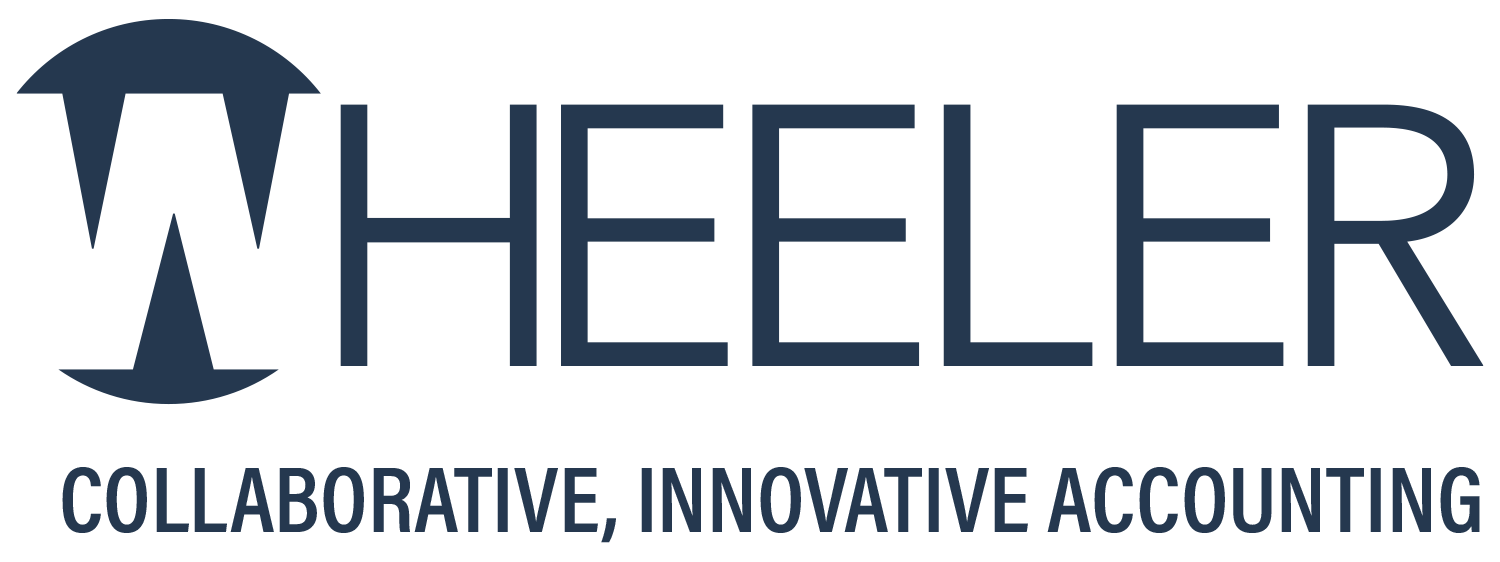If you own a C corporation, you know there’s a tax advantage to taking money out as compensation rather than as dividends. The reason: A corporation can deduct the salaries and bonuses that it pays executives, but it can’t deduct dividend payments. There’s no simple way to determine what’s reasonable.
Continue readingIs Your Business Closing? Here Are Your Final Tax Responsibilities
Businesses shut down for many reasons. Examples include an owner’s retirement, a lease expiration, staffing shortages, partner conflicts and increased supply costs. If you’ve decided to close your business, you might need assistance with some steps in the process, including handling various tax obligations.
Tax Return and Forms
A final income tax return and related forms must be filed for the year of closing. The correct return to file depends on the type of business.
Here’s a rundown of the requirements.
Sole proprietorships:
You must file the usual Schedule C, “Profit or Loss from Business,” with your individual return for the year of closing. You may also need to report self-employment tax.
Partnerships:
A partnership must file Form 1065, “U.S. Return of Partnership Income,” for the year of closing and report capital gains and losses on Schedule D. Indicate that this is the final return and do the same on Schedules K-1, “Partner’s Share of Income, Deductions, Credits, etc.”
All corporations:
Form 966, “Corporate Dissolution or Liquidation,” must be filed if you adopt a resolution or plan to dissolve a corporation or liquidate any of its stock.
C corporations:
File Form 1120, “U.S. Corporate Income Tax Return,” for the year of closing. Report capital gains and losses on Schedule D. Indicate this is the final return.
S corporations:
File Form 1120-S, “U.S. Income Tax Return for an S Corporation” for the year of closing. Report capital gains and losses on Schedule D. The “final return” box must be checked on Schedule K-1.
All businesses:
If you sell your business, other forms may need to be filed to report the sales.
Worker-Related Duties
Businesses with employees must pay the final wages and compensation owed, make final federal tax deposits and report employment taxes. Failure to withhold or deposit all employment taxes due can result in severe penalties.
Generally, payments of $600 or more to contractors during the calendar year of closure must be reported on Form 1099-NEC, “Nonemployee Compensation.”
More Tax Issues to Consider
The list of tax issues related to closing a business is long and often complex, and you may need to be guided through the steps. For example, a business that has an employee retirement plan will need to terminate the plan and distribute the benefits to participants. Flexible Spending Accounts and Health Savings Accounts must also be terminated.
There may be debt cancellation issues to wrestle with. Other possibilities include dealing with net operating losses, passive activity losses, depreciation recapture and possible bankruptcy issues.
You need to be aware of how long to retain business records. And finally, you may need to know how to navigate payment options if your business is unable to pay the remaining taxes owed.
Closing a business typically brings up a lot of questions. Contact the office for answers.
408-252-1800
Photo Credit to https://homethods.com/
Retirement Saving Options for Your Small Business
If you’re looking for a retirement plan for yourself and your employees but worried about the financial commitment and administrative burdens involved, there are some options to consider. One possibility is a Simplified Employee Pension (SEP). This plan, which comes with relative ease of administration and the discretion to make or not make annual contributions, is especially attractive for small businesses.
There’s still time to see tax savings on your 2023 tax return by establishing and contributing to a 2023 SEP, right up to the extended due date of the return. For example, if you’re a sole proprietor who extends your 2023 Form 1040 to October 15, 2024, you have until that date to establish a SEP and make the initial contribution, which you can then deduct on your 2023 return.
SEP Involves Easy Setup
You can set up a SEP easily using the IRS model SEP, Form 5305-SEP. This form, which doesn’t have to be filed with the IRS, satisfies the SEP requirements. (You can opt for an individually designed SEP instead, depending on your needs.)
As the employer, you’ll get a current income tax deduction for contributions you make on behalf of your employees. Your employees won’t be taxed when the contributions are made but will be taxed later when distributions are made, usually at retirement.
The maximum deductible contribution that you can make to a SEP-IRA, and that can be excluded from taxable income, is the lesser of: 1) 25% of compensation, or 2) $69,000 for 2024 (up from $66,000 for 2023) per employee. Note, however, that if you, as the business owner, don’t receive a W-2 from the business (for instance, you’re an unincorporated sole proprietor), the calculation for the contribution to be made on behalf of yourself varies slightly. The deduction for your contributions to employees’ SEP-IRAs isn’t limited by the deduction ceiling applicable to an individual’s own contribution to a regular IRA.
Your employees control their individual SEP IRAs and the investments in them as well as the tax-deferred earnings. However, they can’t contribute.
There are other requirements you’ll have to meet to be eligible to establish and make contributions to a SEP. Essentially, all regular employees must elect to participate in the program, and contributions can’t discriminate in favor of highly compensated employees. But these requirements are minor compared to the bookkeeping and other administrative burdens connected with traditional qualified retirement and profit-sharing plans.
SEPS don’t require the detailed records that traditional plans must maintain. Also, there are no annual reports to file with the IRS, and the recordkeeping that is required can be done by a trustee of the SEP-IRA, usually a bank or mutual fund.
Another Option: SIMPLEs
If your business has 100 or fewer employees, you may want to consider a Savings Incentive Match Plan for Employees (SIMPLE). An advantage is that employees can also contribute. A disadvantage is that you, as the employer, are required to make certain annual contributions. Also, a SIMPLE has more limitations on when it can be set up and when it can be contributed to than a SEP.
You establish a SIMPLE IRA for each eligible employee, generally making matching contributions based on amounts elected by participating employees under a qualified salary reduction arrangement. The SIMPLE is also subject to much less stringent requirements than traditional qualified retirement plans.
Another option: An employer can adopt a SIMPLE 401(k) plan, with similar features to a SIMPLE IRA. It’s not subject to the otherwise complex nondiscrimination rules that apply to regular 401(k) plans.
For 2024, SIMPLE employee deferrals are limited to $16,000 (up from $15,500 for 2023). Additional $3,500 catch-up contributions are also allowed for employees ages 50 and older.
More Information
Additional rules and limits apply to both SEPs and SIMPLEs. Contact the office for more information.
408-252-1800
Photo by rawpixel from Freerange Stock.
Hiring? How to Benefit from the Work Opportunity Tax Credit
If you’re a business owner or manager who is seeking to hire, you should be aware of the details of a valuable tax credit for hiring individuals from one or more targeted groups. Employers can qualify for the Work Opportunity Tax Credit (WOTC), which is worth as much as $2,400 for most eligible employees (higher or lower for certain employees). The credit is limited to eligible employees who begin work for an employer before January 1, 2026.
Who is Eligible?
Generally, an employer is eligible for the WOTC only for qualified wages paid to members of a targeted group. These groups are:
- Qualified members of families receiving assistance under the Temporary Assistance for Needy Families (TANF) program,
- Qualified veterans,
- Qualified ex-felons,
- Designated community residents,
- Vocational rehabilitation referrals,
- Qualified summer youth employees,
- Qualified members of families in the Supplemental Nutritional Assistance Program (SNAP),
- Qualified Supplemental Security Income recipients,
- Long-term family assistance recipients, and
- Long-term unemployed individuals.
To claim the WOTC, an employer must first get certification that the person hired is a member of one of the targeted groups above. An employer can do so by submitting Form 8850, Pre-Screening Notice and Certification Request for the WOTC, to their state agency within 28 days after the eligible worker begins work.
You Must Meet Certain Requirements
There are several requirements to qualify for the credit. For example, each employee must have completed a specific number of hours of service for the employer. Also, the credit isn’t available for employees who are related to or who previously worked for the employer.
There are different rules and credit amounts for certain employees. The maximum credit available for first-year wages generally is $2,400 per employee. But it’s $4,000 for long-term family assistance recipients, and it’s $4,800, $5,600 or $9,600 for certain veterans. Additionally, for long-term family assistance recipients, there’s a 50% credit for up to $10,000 of second-year wages, resulting in a total maximum credit, over two years, of $9,000.
For summer youth employees, the wages must be paid for services performed during any 90-day period between May 1 and September 15. The maximum WOTC credit available for summer youth employees is $1,200 per employee.
An eligible employer claims the WOTC on its federal income tax return. The credit value is limited to the business’s income tax liability.
A Valuable Credit
There are additional rules and requirements. In some cases, employers may elect not to claim the WOTC. And in limited circumstances, the rules may prohibit the credit or require an allocation of it. However, for most employers hiring from targeted groups, the credit can be worthwhile. Contact the office with questions or for more information about your situation.
408-252-1800
Photo by RACOOL from Freerange Stock.
Traveling for Business in 2024? What’s Deductible?
If you and your employees will be traveling for business this year, there are many factors to keep in mind. Under the tax law, certain requirements for out-of-town business travel within the United States must be met before you can claim a deduction. The rules apply if the business conducted reasonably requires an overnight stay.
Note: Under the Tax Cuts and Jobs Act, employees can’t deduct their unreimbursed travel expenses through 2025 on their own tax returns. That’s because unreimbursed employee business expenses are “miscellaneous itemized deductions” that aren’t deductible through 2025. Self-employed individuals can continue to deduct business expenses, including away-from-home travel expenses.
Rules That Come Into Play
The actual costs of travel (for example, plane fare and cabs to the airport) are generally deductible for out-of-town business trips. You’re also allowed to deduct the cost of lodging. And a percentage of your meals is deductible even if the meals aren’t connected to a business conversation or other business function. For 2024, the law allows a 50% deduction for business meals.No deduction is allowed for meal or lodging expenses that are “lavish or extravagant,” a term that generally means “unreasonable.” Also, personal entertainment costs on trips aren’t deductible, but business-related costs such as those for dry cleaning, phone calls and computer rentals can be written off.
Mixing Business With Pleasure
Some allocations may be required if the trip is a combined business/pleasure trip; for example, if you fly to a location for four days of business meetings and stay on for an additional three days of vacation. Only the costs of meals, lodging and so on incurred during the business days are deductible, not those incurred for the personal vacation days.
On the other hand, with respect to the cost of the travel itself (for example, plane fare), if the trip is primarily for business purposes, the travel cost can be deducted in its entirety and no allocation is required. Conversely, if the trip is primarily personal, none of the travel costs are deductible. An important factor in determining if the trip is primarily business or personal is the amount of time spent on each (though this isn’t the sole factor).
Suppose a trip isn’t for the actual conduct of business but is for the purpose of attending a convention or seminar. The IRS may check the nature of the meetings carefully to make sure they aren’t vacations in disguise, so retain all material helpful in establishing the business or professional nature of this travel.
Also, personal expenses you incur at home related to the trip aren’t deductible. This might include costs such as boarding a pet while you’re away.
Is Your Spouse Joining You?
The rules for deducting the costs of a spouse who accompanies you on a business trip are very restrictive. No deduction is allowed unless the spouse is an employee of yours or of your company. If that isn’t the case, then even if there’s a bona fide business purpose for having your spouse make the trip, you probably won’t be able to fully deduct his or her travel costs (though you can deduct some costs).
Specifically, the restrictions apply only to additional costs incurred by having your non-employee spouse travel with you. For example, the expense of a hotel room or for traveling by car would likely be fully deductible since the cost to rent the room or to travel alone or with another person would be the same, even in a rented car.
Before You Hit the Road
Contact the office with any questions you may have about travel deductions to help you stay in the right lane.
408-252-1800
Photo Credit to https://homethods.com/.
Beneficial Ownership Information Reporting
In 2021, The Financial Crimes Enforcement Network (FinCEN) established a beneficial ownership information requirement (BOI). Most U.S entities will now be required to report information relating to individuals who directly or indirectly own a company.
This post is to bring to your attention a new requirement that begins in 2024 and which may affect you and your business. We’ll discuss which entities are require to file, the filing requirements and due dates, and penalties if filing is not completed. This filing is NOT a part of your annual tax return and so it is important that you take steps to comply with these new rules. The following is important information to assist you with compliance.
WHEN DO YOU NEED TO FILE?
Filing due dates for the beneficial ownership report depend on when the company was founded:
- For entities founded before 1/1/24, the filing is due by 1/1/25.
- For entities founded between 1/1/24 and 12/31/24, the filing is due 90 days after the company filed formation documents.
- For entities founded after 1/1/25, the filing is due 30 days after the company filed formation documents.
The company applicant report has the same filing due dates as the beneficial ownership report, except for entities founded before 1/1/24. For entities founded before 1/1/24 there is no filing requirement for the company applicant.
If there are any updates to owners or individuals who exercise substantial control the company needs to file updated reports within 30 days of the change.
WHICH ENTITIES MUST FILE?
Both Domestic and Foreign entities have filing obligations. Domestic reporting companies include corporations, LLCs, and any other entity created by filing a document with the Secretary of State or any similar office. Foreign reporting companies are entities formed under law of a foreign country but have registered to do business in the US. There are certain entities that are exempt from filing requirements:
- Tax Exempt entities
- Inactive entities
- Other types of exempt entities:
- Securities reporting issuer, governmental authority, bank, credit union, depository institution holding company, money services business, broker or dealer in securities, securities exchange or clearing agency, other Exchange Act registered entity, investment company or investment adviser, venture capital fund adviser, insurance company, state-licensed insurance producer, Commodity Exchange Act, accounting firm, public utility, financial market utility, pooled investment vehicle, large operating company
What are the filing requirements?
There are two filing obligations: company applicant and beneficial ownership. Both filing obligations are submitted online to FinCEN.
A company applicant report identifies the individual who filed the formation documents to create or register the entity. The company can have multiple applicants if there is more than one person involved in the creation or registration of the company. The company applicant can also be someone who is not an owner of the company, like a lawyer or a CPA, if they are the individual who registered the company.
A beneficial ownership report is filed for any individual who exercises substantial control over a company or owns at least 25% of the reporting company’s ownership interest. Substantial ownership includes anyone who is a senior officer, an individual who has authority to appoint or remove officers and any individual who is an important decision maker.
If you are unsure of the beneficial ownership of an entity you are associated with, we advise you to discuss this with council to assure that you are properly meeting the filing requirements.
What information is needed for the report?
Company information needed:
- Legal Name
- Any trade names or DBA’s
- Current street address of it’s principal place of business in the U.S.
- Jurisdiction of formation or registration
- Taxpayer identification number
Individual owner or Individual Company application information needed:
- Individual name
- Date of Birth
- Address
- Identifying number from an acceptable identification document (Drivers license or passport) and the jurisdiction in which the identifying document was issued
What if I choose not to file?
The penalties are $500 per day with a maximum of $10,000 in penalties. Failure to file could also result in up to two years in prison.
The new reporting requirement will start in 2024. Please feel free to contact Wheeler Accountants, LLP if you need assistance with navigating how to determine if you are required to complete this filing or have other questions.
408-252-1800
Photo Credit to https://homethods.com/
Increase to California SDI Starting in 2024 – Opt Out May Be Available
By Michael Sands
Senate Bill 951 became effective on January 1, 2024 and provides for increased short-term disability and Paid Family Leave benefits for covered employees. To pay for these benefits, the bill removes the wage cap for California’s State Disability Insurance tax, making all wages subject to SDI tax beginning in 2024.
For 2023, the SDI rate was 0.9% with a maximum wage base of $153,164. For 2024, the SDI rate is increased to 1.1% with no maximum wage base. To give you an idea of the potential increase, an employee making a $1,000,000 salary would pay additional SDI tax of $9,622 compared to 2023. An employee making a $500,000 salary would pay additional SDI tax of $4,122 compared to 2023.
For most wage earners, the increase is unavoidable, but sole shareholders of private corporations (including married couples who own 100% of a corporation) who are also officers of the corporation may file an election to opt out of SDI coverage and instead purchase private disability insurance that may cost less.
The exemption is made by filing EDD form DE 459 and goes into effect in the calendar quarter filed. It remains irrevocable for the remainder of the year and at least two succeeding calendar years. Thereafter, it remains in effect until withdrawn, although changes in stock ownership or status as a corporate officer may terminate the exemption.
Shareholders who make the election should be aware that they will no longer qualify to receive SDI benefits (including Paid Family Leave) and should consider obtaining alternative disability insurance coverage. They should also notify their payroll companies that the election has been made and that Form DE9C should be coded with plan code “R” to designate the shareholder (and/or spouse) opt-out.
If you have any questions or are curious to learn more about this planning opportunity, please contact our office.
Photo Credit to https://www.lyncconf.com/.
Businesses Can Save Taxes by Acquiring and Placing Assets in Service by Year End
Under Section 179 of the Internal Revenue Code, companies can “expense” the full cost of qualifying fixed assets to reduce their taxable income. This means they can deduct the purchase amount currently rather than having to depreciate the asset over many years. Both new and used fixed assets can qualify. The election is available for qualified property placed in service anytime during the tax year.
If you’d like to reduce your 2023 tax liability and are on a calendar tax year, consider acquiring and placing in service qualified assets by Dec. 31, 2023.
For 2023, the maximum overall deduction allowed is $1.16 million (increasing to $1.22 million for 2024). The total asset purchase limit for 2023 is $2.89 million (increasing to $3.05 million for 2024), after which the deduction for the year is reduced dollar-for-dollar until it’s eliminated. You may be able to claim bonus depreciation (80% for 2023, falling to 60% for 2024) on eligible amounts in excess of your Sec. 179 expensing limit.
Education Benefits Help Attract and Retain Employees While Saving Taxes
Your business can attract and retain employees by providing education benefits that enable team members to improve their skills and gain additional knowledge, all on a tax-advantaged basis. Here’s a closer look at some education benefits options.
Educational Assistance Program
One popular fringe benefit that an employer can offer is an educational assistance program that allows employees to continue learning, and perhaps earn a degree, with financial help from the employer. An employee can receive, on a tax-free basis, up to $5,250 each year under a “qualified educational assistance program.”
For this purpose, “education” means any form of instruction or training that improves or develops an individual’s capabilities. It doesn’t matter if it’s job-related or part of a degree program. This includes employer-provided education assistance for graduate-level courses, as well as courses normally taken by individuals pursuing programs leading to a business, medical, law, or other advanced academic or professional degree.
The educational assistance must be provided under a separate written plan that’s publicized to your employees and meets specific conditions. A plan can’t discriminate in favor of highly compensated employees.
In addition, not more than 5% of the amounts paid or incurred by the employer for educational assistance during the year may be provided for individuals (including their spouses or dependents) who own 5% or more of the business.
No deduction or credit can be claimed by an employee for any amount excluded from the employee’s income as an education assistance benefit.
If you pay more than $5,250 for educational benefits for an employee during the year, that excess amount must be included in the employee’s wages and the employee must generally pay tax on it.
Job-Related Education
In addition to, or instead of applying, the $5,250 exclusion, an employer can fund an employee’s educational expenses on a nontaxable basis if the educational assistance is job-related. To qualify as job-related, the educational assistance must:
- Maintain or improve skills required for the employee’s then-current job, or
- Comply with certain express employer-imposed conditions for continued employment.
“Job-related” employer educational assistance isn’t subject to a dollar limit. To be job-related, the education can’t qualify the employee to meet the minimum educational requirements for his or her employment or other trade or business.
Educational assistance benefits meeting the above “job-related” rules are excludable from employees’ income as working condition fringe benefits.
Assistance with Student Loans
Some employers also offer student loan repayment assistance as a recruitment and retention tool. Starting in 2024, employers can help more.
Under the SECURE 2.0 Act, an employer will be able to make matching contributions to 401(k) and certain other retirement plans with respect to “qualified student loan payments.’ The result of this provision is that employees who can’t afford to save money for retirement because they’re repaying student loan debt can still receive matching contributions from their employers.
Tax-Smart Employee Attraction and Retention
In today’s competitive job market, providing education-related assistance can make a difference in attracting and retaining the best employees. Structured properly, these plans can also save taxes for both your business and your employees.
Use the Tax Code to Make Business Losses Less Painful
Whether you’re operating a new company or an established business, losses can happen. The federal tax code may help soften the blow by allowing businesses to apply losses to offset taxable income in future years, subject to certain limitations.
Qualifying for a Deduction
The net operating loss (NOL) deduction addresses the tax inequities that can exist between businesses with stable income and those with fluctuating income. It essentially lets the latter average out their income and losses over the years and pay tax accordingly.
Eligibility for the NOL deduction depends on having deductions for the tax year that exceed your income. The loss generally must be caused by deductions related to your:
- Business (Schedules C and F losses, or Schedule K-1 losses from partnerships or S corporations),
- Casualty and theft losses from a federally declared disaster, or
- Rental property (Schedule E).
The following generally aren’t part of the NOL determination:
- Capital losses that exceed capital gains,
- The exclusion for gains from the sale or exchange of qualified small business stock,
- Nonbusiness deductions that exceed nonbusiness income,
- The NOL deduction itself, and
- The Section 199A qualified business income deduction.
Individuals and C corporations are eligible to claim the NOL deduction. Partnerships and S corporations generally aren’t eligible, but partners and shareholders can calculate individual NOLs using their separate shares of business income and deductions.
Limitations
Prior to the Tax Cuts and Jobs Act (TCJA), taxpayers could carry back NOLs for two years and carry them forward 20 years. They also could apply NOLs against 100% of their taxable income.
The TCJA limits NOL deductions to 80% of taxable income for the year and eliminates the carryback of NOLs (except for certain farming losses). However, it does allow NOLs to be carried forward indefinitely.
If your NOL carryforward is more than your taxable income for the year you carry it to, you may have an NOL carryover. That’s the excess of the NOL deduction over your modified taxable income for the carryforward year. If your NOL deduction includes multiple NOLs, you must apply them against your modified taxable income in the same order you incurred them, beginning with the earliest.
A Limit on Excess Business Losses
The TCJA also established an “excess business loss” limitation, effective beginning in 2021. For partnerships or S corporations, this limitation applies at the partner or shareholder level, after applying the outside basis, at-risk and passive activity loss limitations.Under the rule, noncorporate taxpayers’ business losses can offset only business-related income or gain, plus an inflation-adjusted threshold. For 2023, that threshold is $289,000, or $578,000 if married filing jointly. For 2024, the thresholds are $305,000 and $610,000, respectively. Remaining losses are treated as an NOL carryforward to the next tax year. That is, you can’t fully deduct them because they become subject to the 80% income limitation on NOLs, reducing their tax value.
Important: Under the Inflation Reduction Act, the excess business loss limitation applies to tax years beginning before January 1, 2029. Under the TCJA, it had been scheduled to expire after December 31, 2026.
Planning Ahead
The tax rules regarding business losses are complex, especially the interaction between NOLs and other potential tax breaks.
Contact the office for help charting the best course forward: (408) 252-1800










